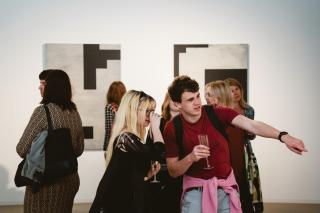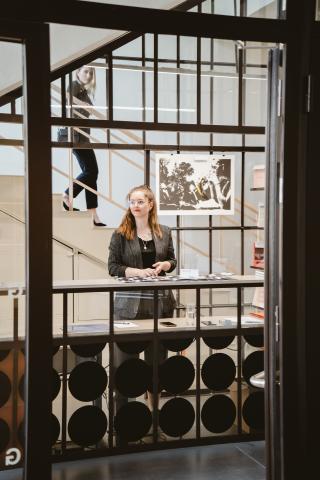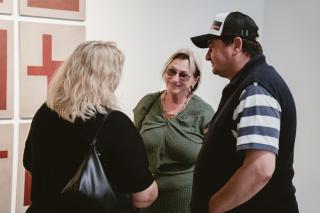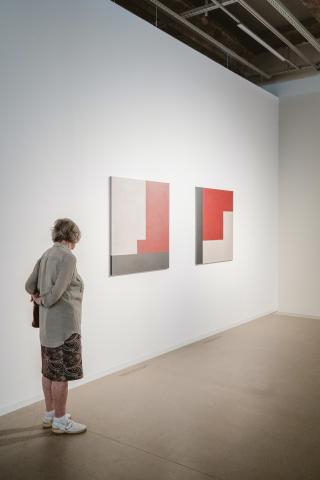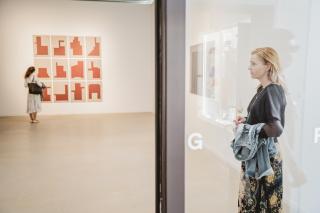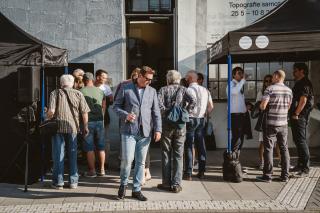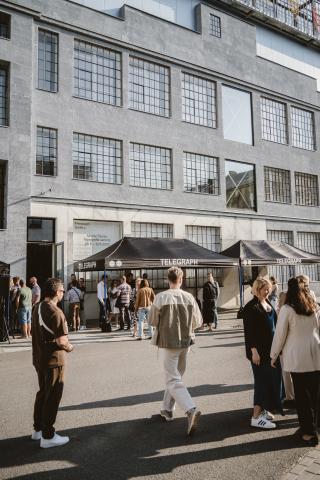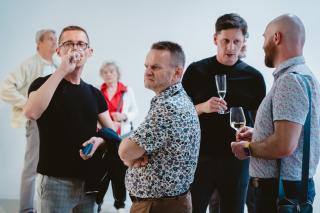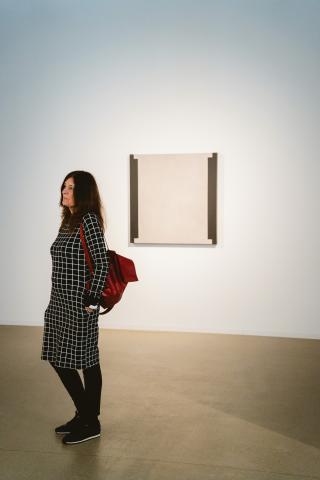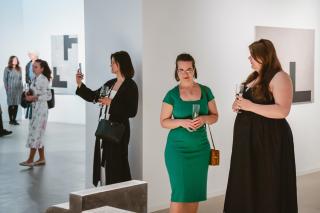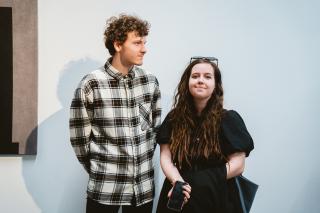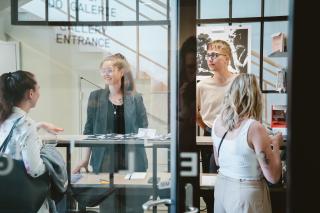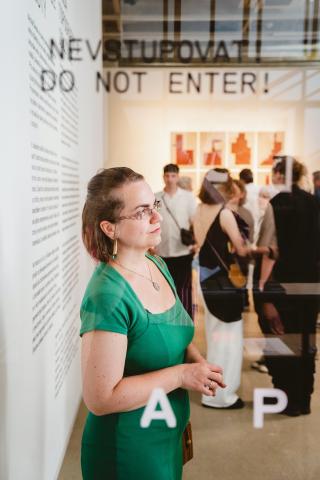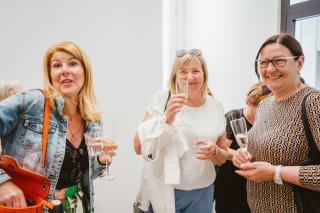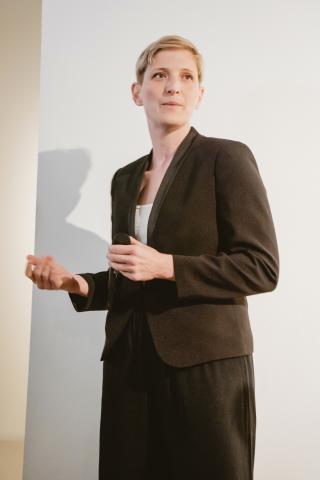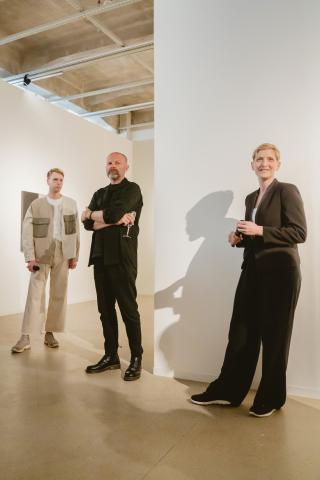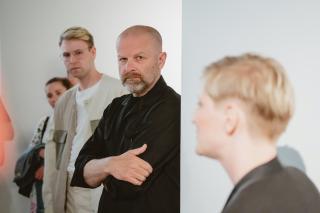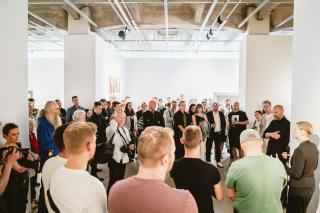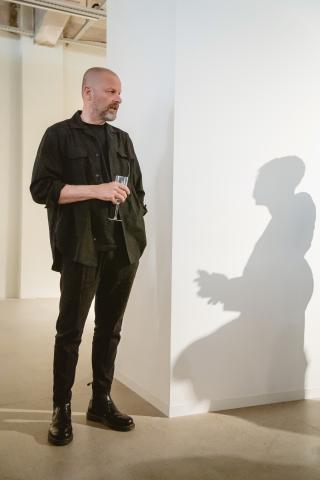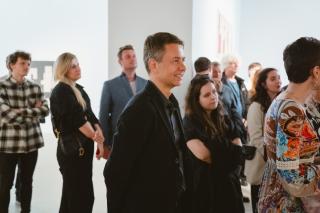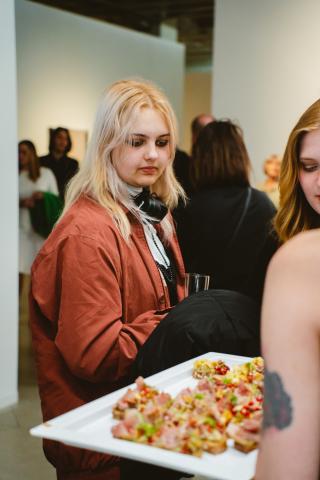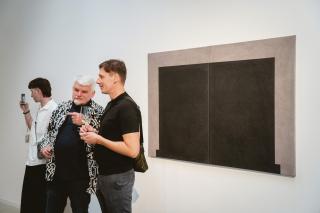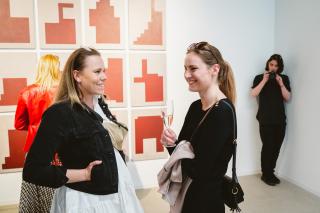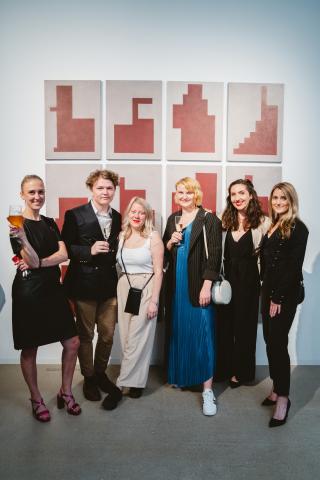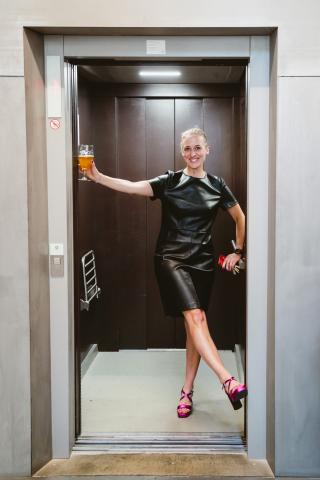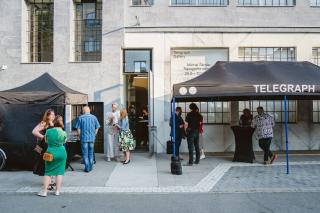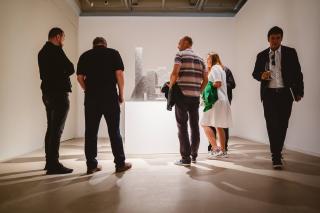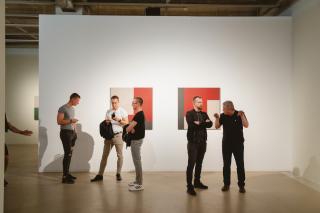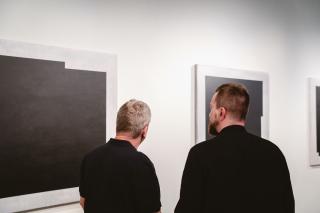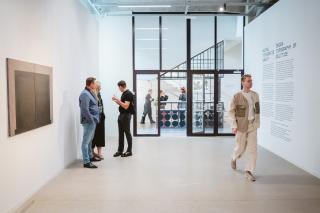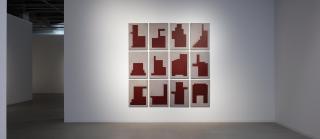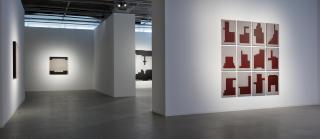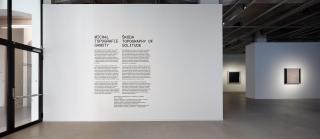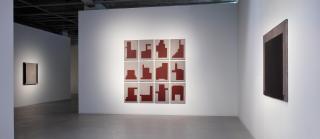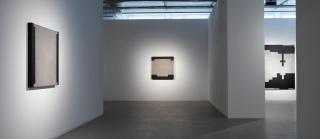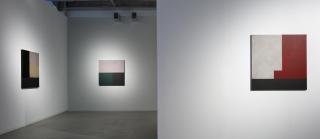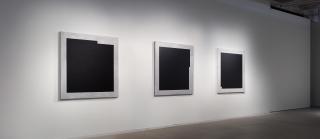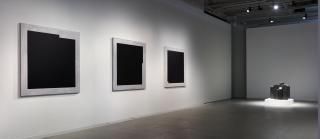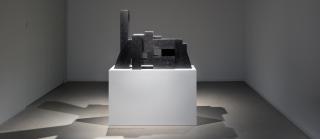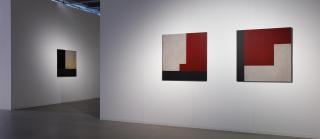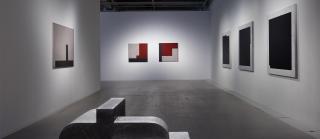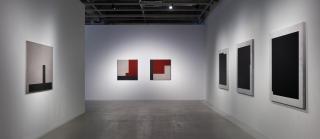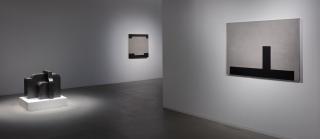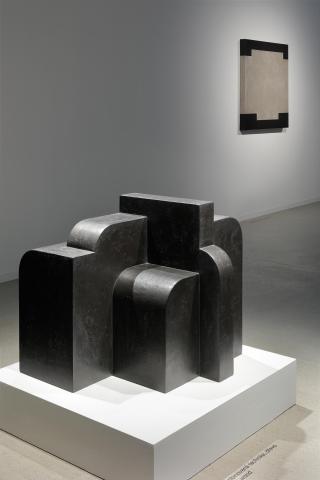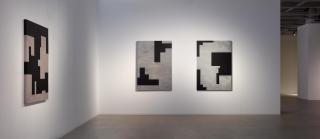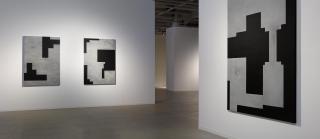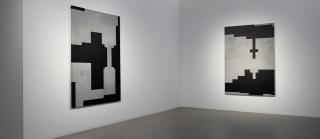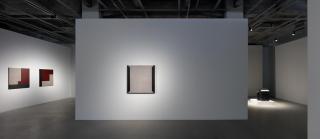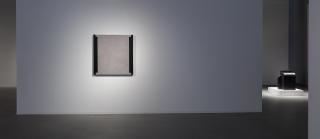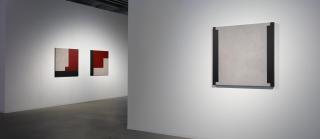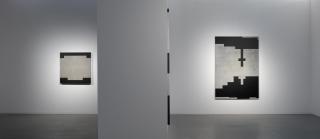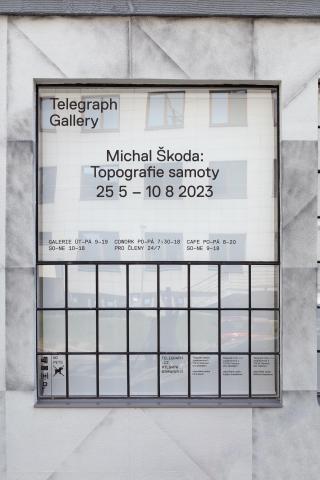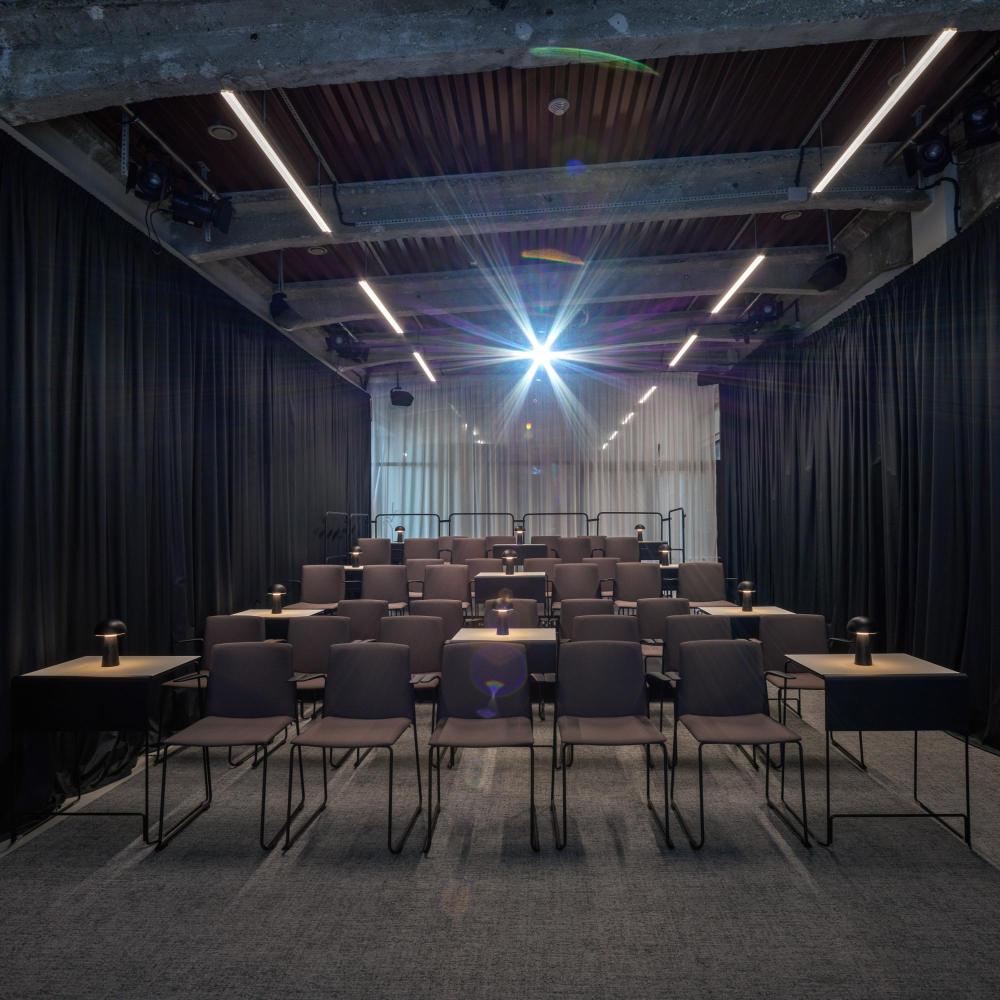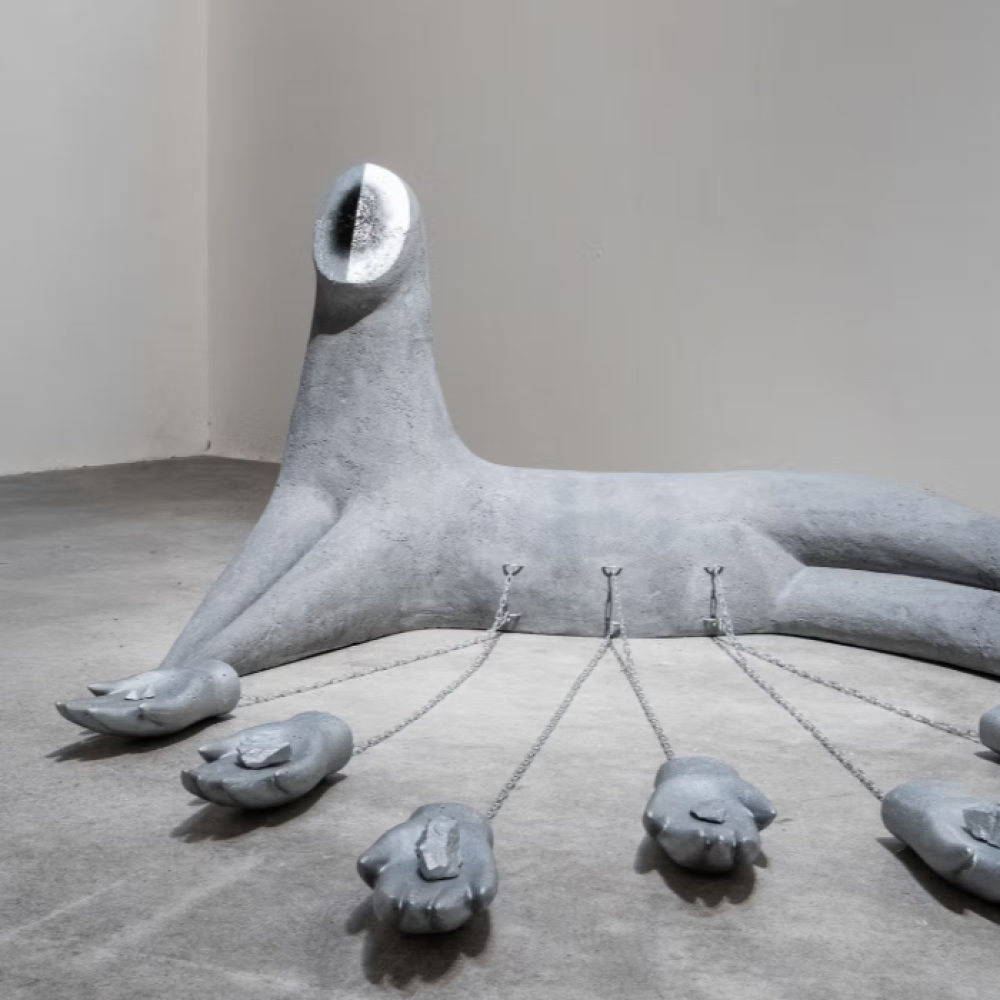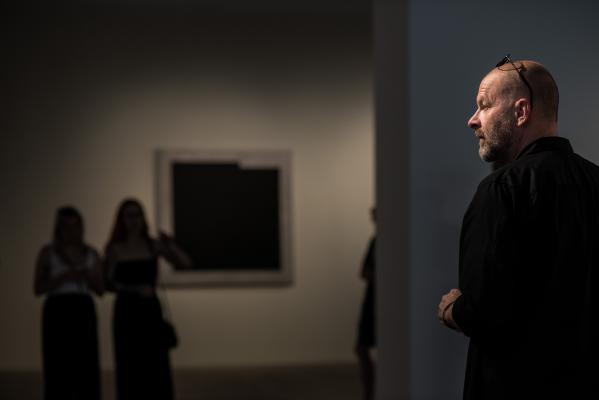
I want to ask you about the topic of IMAGE, which is related to the current exhibition of your paintings Topography of Solitude at the Telegraph Gallery in Olomouc, but first I would like to know if you know how to do nothing, create nothing and completely switch off?
I can imagine going away for six months or even longer and doing nothing, but I don't know what would happen when I came back. For me, travel is terribly important, but I don't mean going somewhere I go on purpose, knowing that actually every trip touches my work again in some way. I'm thinking of places like Sri Lanka or Bali, somewhere out in nature, away from what is common everywhere here, although beautiful powerful and inspiring. Somewhere just a hut, a beach and get rid of everything that somehow keeps influencing me, attacking me and completely switch off. I can imagine that. There, maybe it could kick one off in a different way and be the trigger for something completely new that I have no idea about right now... But it's possible that I might suddenly find my head going more there than here. I don't know. So maybe it's not possible, the shutting down. I think I'm obsessed with work. It's really intertwined with my everyday life and my personal life, it's not my sort of in quotes job, so to give you a very simple answer, it's probably unthinkable.
For many years I said that the most important inspiration for me was an interest in space, but then over time I've come to the point where I have to correct that a little bit, because it's not entirely accurate, and even though it may sound like a platitude, my main theme is the everyday. The way it's connected to my life, anything can affect me - place, building, book, film, theatre, music, dance, poetry, everything, personal inner life, physicality, relationships, city versus nature, it all plays in there somehow. I think that's pretty significant, that for me all these things mix and sediment, and then I draw from it, create something, and then put it back into the world. Even though it has an essentialist form in the end, it's not just one thing, one inspiration, one experience. Just as the world somehow communicates with me, I somehow communicate back to the world through my work.
I guess it's enjoyable too, this searching and finding... something?
It certainly does, it fulfills me and I couldn't be without it. Although basically I've been more interested in architecture than fine art for a long time, I'd rather go and see a building, a place, etc. than an exhibition. I still need to do it though, I can't be without art, just like I can't go to exhibitions, but I choose a lot already. I meet things, these things come to me somehow, I don't really look for them, I perceive them. Maybe I've come, or if I've had it since I was young, I don't know, to some greater sensitivity of perception of where one is and it still surprises me incredibly and really gives me a lot. There's always something new coming to a person. There's always something new to encounter. Perception is extremely important. It's a de facto phrase too, but we really perceive architecture - the environment we are in - with all our senses - sight, hearing, touch, smell and taste, and it has an incredible effect on us. Maybe even more than we can even realize.
For example, I won't tell you any author who has had a major influence on me, because space, architecture, especially place, has a major influence on me. But it is logical, if one follows art, deals with it (I still do, as you know, curating), then somehow, whether you like it or not, art has an influence on me too, one perceives many things. If he didn't see it, he would think about a lot of things differently, or he probably wouldn't do a lot of things. He has a certain experience of history where, as they say, everything has been done. I'm realizing more and more that my really biggest favorites are doing something completely different than I am. Well, we can talk about a certain indirect influence, for example, when it happens that I come across a detail in such an artist that suddenly opens something up and can start something similar in me, just like an experience in architecture, in a city or a hut in nature. Everything is related to everything, everything is about the everyday, perception, our existence.
So what is your interest in painting and image?
Hand in hand with the perception of just the everyday and all that, I've always had a great interest in painting, painters, paintings, but also painting itself. Not only in art, painting, but in existence in general. Constantly, when you look around you, you perceive an image that de facto changes with every movement. At a certain period I worked with the influence of the city and what was happening around me in it. I started to work with the structuring of space, with emptiness, a kind of emptying, which I am partly returning to today. I worked with just white and shades of grey, a kind of counterpoint to the chaos and visual smog of the city. Hence the paintings - objects on MDF. I was working with a certain image that I was juxtaposing. I was dealing with silence, emptiness, a certain detachment, the fragmentation of the surface, the search for order... Unlike what I'm doing today, it wasn't a classical painting on canvas, there was still an object-ness because of the material that MDF was. What is the perception of space and the everyday? The fact that you have some experience existentially connected to your being, and as we discussed that you perceive space through everything, so usually the primary perception is through the eyes, so a constant confrontation with an image.
Can we put site-specific wall realisations in the lineage of your paintings?
A mural is actually working directly with a given space. Well, for me it was about not painting on the wall some of my drawings or paintings, or something that I normally dealt with on paper, for example, but working directly with the space and coming out of it. Either directly from that gallery space, or it was some kind of reaction to the surroundings that somehow influenced me, addressed me. Then on top of that, there were other questions that I was dealing with at that moment. The experience of physical activity itself, a certain moment of corporeality, was also important for me in these things. If I simplify it a lot, my central theme is man and space. Which brings in other phenomena that have a strong significance in my work, besides physicality it is also time.
But now painting and painting has returned in some pure form and has been developing within your work for over two years now.
Yes, it came during the period of the covid, and that's when I first touched the canvas. As I mentioned this relationship I have with the image, with painting, but I never found the courage to reach for the canvas because I didn't consider myself a painter. There was a great respect for it. Well, at the time you mentioned, suddenly it just kind of broke, it just came and I started working with canvases. I guess maybe it was meant to happen, it was a question, like most of my stuff, where things just matured in me for a long time and suddenly it happened that I knew I actually had to. I have to at least try. Well, it ended up being quite a collection and the result is now on display at the Telegraph Gallery. It started to have a certain evolution as I got to know it and, like everything, I did everything myself, finding my own way to everything based on personal experience. Covid brought me a lot of free time and also daily trips from the studio to the countryside, so it had to be rewritten somehow. Not that I'm any kind of landscape artist, not at all, but there are these horizons. To what extent you can tell what's there and what's not there, I don't know myself, and I'm glad I don't, because otherwise I probably wouldn't want to paint it anymore. If I wanted to verbalize it in some way, maybe it really is the horizons of the fields. I like the horizons both by the sea and from the open countryside, it can be an urban landscape, or it can be certain masses, delimitations. I don't know. As I feel the greatest freedom in abstraction, and also the importance of just really getting the essence out of things without narrative, then it comes out as a geometric abstraction, but it could be a field and a piece of a house, or some sediment from a strong urban experience, as well as a materialized experience coming out of our being, human relationships. I don't know exactly and I don't want to know. All I know is that my stuff is always on a mental level, there is emotion, experience.
A collection of about thirty canvases that we've put up now, and we'll see if there's any reaction, but I see some development, some variation, different things that have been created in a relatively short period of time...
I think it also reflects the fact that I've been influenced by more than one thing, so maybe that helps in the evolution as well. I don't want to proliferate though. I'm addressing an issue and I want to say something. And if I feel like I'm going to say it with four or five images, I'm going to end it. If I feel it's for a larger cycle, I don't resist, but I have to be convinced internally that I want to do it that way. It's out of the question for me to get some kind of calculation in there. Well, even the emerging things can be a certain reflection for the new ones, they can generate something new, maybe a new approach, all this has an influence for sure, and I guess it somehow brings about the development. I thought to myself that this was the end of my canvas phase, that I just felt the need to do it this way, but that the drawings and the objects were the most important for me after all. But now that I've seen how it works differently in that gallery space, I'm not able to say it so clearly. In all modesty, I think that the last things didn't turn out badly, and at the same time they tell me that there is still room to say something. So we'll see.
